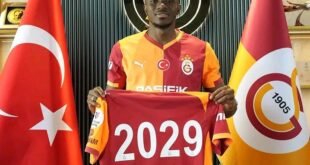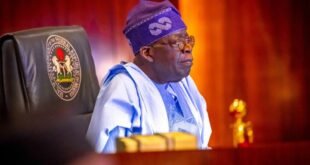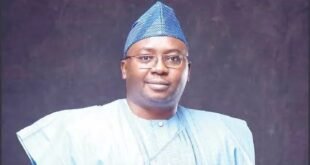The Catholic Church now has its latest pope, after Cardinal Robert Prevost was chosen as the 267th Pope, becoming Pope Leo XIV.
Many Catholics hope that Americans will act as unifying figures, uniting different factions.
Seen as moderate with some progressive attitudes, new Pope It is not expected to be significantly damaged from the approach set by the late Pope Francis.
So how is Leo Xiv compared to his predecessor?
Short concrete
On May 7, 133 Cardinals entered Sistine’s chapel to start their voting. In the afternoon on May 8, white smoke stepped from the chapel chimney, signifying the selection of new whales after the fourth round of the voting.
With the voting stretches for only two days, this year Konklaf comparable to the length of the past.
Before the mid-19th century, it was typical for imbalances to extend for weeks or even months. Konklaf 1740 which was chosen as Pope Benedict XIV, for example, lasted 181 days.
Some of the first conclusions, as started in 1268 and 1292, even lasted more than two years.
However, in the last two centuries, inequality has become a much shorter business. Lack of chosen Pope Francis in 2013 and Pope Benedict XVI in 2005 both lasted only two days, while Pope John Paul II Konklaf in 1978 was three days.
Read more:
New Pope selected
Who is Pope Leo XIV?
“Usually, we get short because, in some cases, there are clear candidates to succeed,” said Professor James Kelly, a professor in Catholic history at Durham University.
Conversely, in modern times, longer conclave usually suggests that there are several candidates considered by cardinals, adding Prof. Kelly.
Although some names are discussed as possible competitors before the conclave, it is clear that the cardinals made a decision quite quickly.
“Most of the cardinals are sensitive to media speculation and will worry about the implications of the PR from a longer conclave,” said Donald Prudlo, a Catholic study professor at the University of Tulsa.
A little older than average
The 69-year-old American began its pap a little older than the average whale since the beginning of the 18th century.
Pope usually starts a role anywhere from the beginning of the 50s to the end of the 70s, with an average age of 65.
The youngest Pope since the 16th century shared names with the newly selected Pope. Leo X, who became a 37 -year -old Pope, was even younger than the fictional character of Jude Law Pope Pius XIII in the 2016 Television Drama The Young Paus.
Despite his young age, Papa Pope Leo X was unexpected shortly cut after he died at the age of 45, his Papa which lasted less than nine years.
The extraordinary young whale was Clement VII, who began his pap about the age of 44 years 1523. He served for more than a decade, where when King Henry VIII broke away to establish the British Church after the Pope refused to cancel the king’s marriage to Catherine from Aragon.
First North American Pope
Born in Chicago, Robert Prevost was the first US Pope, the first to come from North America, and the second from America.
Until the Francis Pope was elected in 2013, all Pope since Pope Zachary in 741 was European.
Although Robert Prevost was born in the United States, he served in Peru for many years and gained citizenship of Peru with his American passport in 2015.
Because the number of Catholics from continents such as South America and Africa has increased, speculation is widespread that the cardinals may again choose whales from outside Europe as a recognition of the increasing diversity of the church.
With the selection of Pope Leo XIV, this roar has proven to be true.
Pope’s choice from outside Europe is likely to be assisted by the efforts of former Pope, Pope Francis, to diversify College of Cardinals. Until Francis pointed out more cardinal than other continents, most Always from Europe.
And the cardinals appointed by Francis made most of those who were eligible to vote at the Konklave this year. Only those who are younger than 80 years when the Papal seat becomes empty who can act as “voters”.
Although currently there are 252 cardinals who live, only 135 who meet the requirements as voters, with two absent, leaving 133 cardinals who voted their votes.
Name with long history
Robert Prevost has chosen the name of Leo XIV, one with a long history among his predecessors.
The latest pope to use the same papal name is Pope Leo XIII, a progressive whale who served from 1878 to 1903.
Among all the pope of the past, the most common papal name is John, popular because of his association with several major Christian figures, including John The Apostle and John The Baptist. After John, the most common names are Gregory and Benedict.
The names of the Papal are almost always taken from the Pope of the past or the famous saints. However, one new Pope’s name is almost certain not to be considered Peter. Saint Peter is the first highest Pope of Rome and the Apostle of Jesus, according to Christian beliefs.
Taking the name will add to “pressure of expectations,” explained Prof. Kelly. “You don’t want to follow the Main Apostle. Who wants to be Peter like that? You know you will never live enough for it.”
Religious commands
Pope Francis made history in 2013 when he became the first Pope to be part of the people of Jesus (Jesuits), a Catholic religious order known for his missionary work and emphasis on charity and social justice.
Francis’s Jesuit roots are clear in all of its pisses through advocacy for the poor and avoiding luxury.
Pope Leo XIV, on the other hand, is a member of the St Augustine Order, who follows the rules of St. Augustine Hippo and promotes community ideals and the common good.
While most Pope has not been affiliated with religious orders, at least 36 has become a member, according to Sky News analysis.
The most represented is the order of ST benedict, the oldest religious order that is still alive in the Western Church that encourages compliance, contemplative silence, and humility. Seventeen Pope is Benedictin, with the latest is the 19th century Gregory XVI Pope.
Augustinians, previously led by Pope Leo XIV as the previous general, or the top leader, is the second popular religious order for the past.
A Pope, Pope Paul IV, even helped build a religious order, a regular ulama congregation. Known as Theatines, the order emerged in 1524 in response to reform, with its members aimed at rehabilitating the church moral code and complying with a strict poverty.
After Pope Gregory XVI, there was no other whale that became part of religious orders to Pope Francis.
Explore data about the previous whale with our table that can be searched below:
That Data and forensics Team is a multi-skilled unit dedicated to providing transparent journalism from Sky News. We collect, analyze, and visualize data to tell data -based stories. We combine traditional reporting skills with sophisticated analysis of satellite images, social media and other open source information. Through multimedia storytelling we aim to further explain the world while also showing how our journalism is carried out.
 JamzNG Latest News, Gist, Entertainment in Nigeria
JamzNG Latest News, Gist, Entertainment in Nigeria












